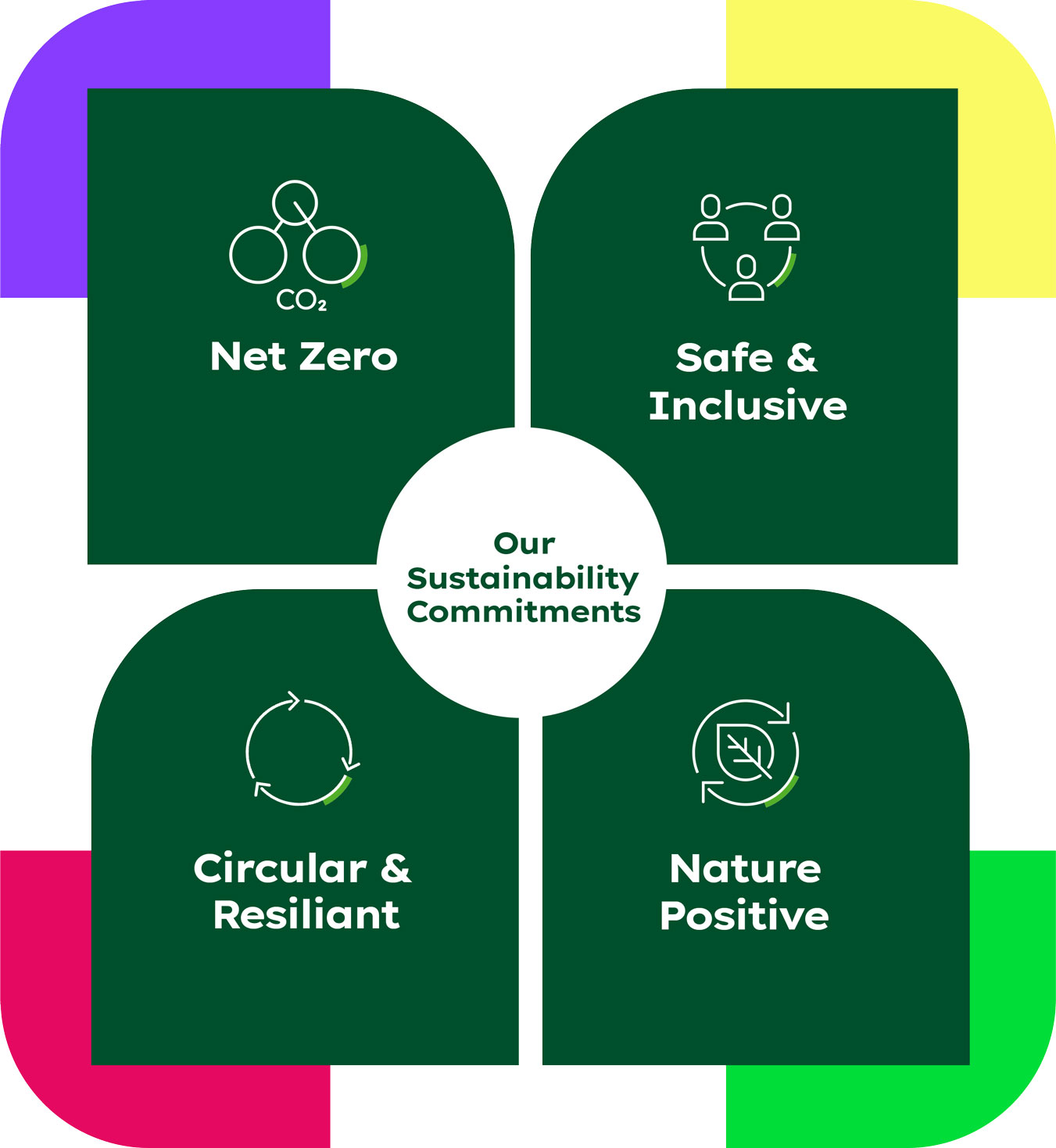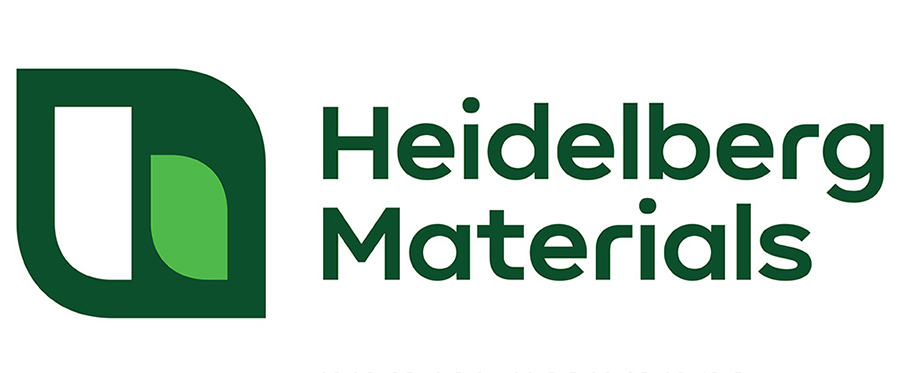About Heidelberg Materials Edmonton CCS
Project Description
We are in the preliminary stages of developing a Carbon Capture and Storage (CCS) facility to capture and store carbon dioxide (CO2) emissions from our cement plant located in NW Edmonton to the west of 170th Street and north of Yellowhead Trail. This project is set to revolutionize the cement industry by creating the world's first full-scale carbon capture project at a cement plant, resulting in net-zero cement without the use of offsets. A game changer for the cement industry.
Emissions from cement production will be minimized through on-site cogeneration. CO2 emissions from power and steam generation will be captured and stored, resulting in the production of low carbon electricity. This low carbon electricity will be used to power our current Edmonton cement plant, the CCS facility, and will contribute low-carbon electricity into the grid.
The technologies applied to maximize CO2 removal will also result in incremental reductions of other emissions, such as sulphur dioxide and particulate matter from the pretreatment of the cement flue gases. Cooling the flue gas causes water to condense out of the vapour. This condensed water will be used for cooling the new facility and will reduce the existing cement plants need for fresh water.
Ultimately, this cutting-edge facility will play a pivotal role in combating climate change, capturing more than 1 million tonnes of CO2 annually. This figure roughly equates to taking approximately 220,000 cars off the road for one year.
Addressing Climate Change Effects Through Sustainable Cement Production. Why Now?
Cement production stands as a critical contributor to global greenhouse gas emissions, accounting for a staggering 8% of the world's total. Concrete is primarily composed of cement and is second to water as the most utilized substance in the world. Concrete plays an indispensable role in construction worldwide, driven by its unparalleled strength, resilience, thermal mass, and workability.
Global Infrastructure Basel's 4th GIB Summit Report states that an estimated 75% of the infrastructure in place by 2050 has not yet been built , highlighting the importance of redefining how cement is produced. Our Carbon Capture, Utilization, and Storage is one of many Heidelberg Materials’ projects underway to achieve our target of carbon dioxide reductions of up to 10 million tonnes by 2030.
Our Path to a Net-Zero Future
At Heidelberg Materials, we pursue a consistent sustainability strategy. The United Nations Sustainable Development Goals (SDGs) shape our strategy and sustainability commitments. Our Sustainability Commitments 2030 form the basis for our sustainability activities.
Net-Zero Future
We drive the decarbonisation of our sector andprovide low-carbon products.
Safe & Inclusive Future
We place the health and wellbeing of employees, communities, and suppliers at the core of our business operations.
Circular & Resilient Future
We drive circularity to recycle and reuse materials and reduce the use of natural resources.
Nature Positive Future
We contribute to a nature positive world through our industry-leading biodiversity programme and sustainable water management

We continuously monitor the achievement of our sustainability commitments. We are convinced that sustainability is a common goal in which everyone should participate and contribute.
Biodiversity Management Plans
We use Biodiversity Management Plans in our operations as a risk management tool to verify that we are not negatively impacting biodiversity. The plans identify sensitive ecosystems and species, timelines for achieving objectives such as invasive species management, and recognize ways in which biodiversity may be enhanced during sites' operational life cycle.
Wildlife interactions
We operate in a manner that minimizes disturbance to wildlife. This includes avoiding potential wildlife habitat such as nesting areas, dens, and other significant wildlife features.
Biodiversity Improvements
Example actions may include:
- Controlling the spread of invasive species on-site
- Establishing native plants to encourage biodiversity
- Reclaiming areas of quarries that are no longer being mined
- Monitoring species use/inventory of areas for better management practices
Our CCS Project Partners
Enbridge Inc.
Enbridge Inc. is developing the Open Access Wabamun Carbon Hub near Edmonton, AB. Once built, the hub will transport the captured carbon dioxide (CO2) from our site, store it in geologic formations, and implement a Measuring Monitoring and Verification program to ensure the CO2 remains safely stored.
This collaboration demonstrates our focus on local, cost-effective solutions that drive scale and competitiveness while minimizing infrastructure footprint to protect land, water, and the environment.
About Enbridge
Enbridge Inc. is a leading North American energy infrastructure company. The company safely and reliably delivers the energy people need and want to fuel quality of life. Its core businesses include Liquids Pipelines, Gas Transmission and Midstream, Gas Distribution and Storage and Renewable Power Generation. For more information, visit www.enbridge.com .
Project Due Diligence
Northern Alberta Institute of Technology (NAIT) and Heidelberg Materials Partnership
Northern Alberta Institute of Technology’s (NAIT) large scale objective is to establish a comprehensive long-term monitoring program for natural areas in the NW region of Edmonton. This monitoring program initiative would encompass Kinokamau Lake and potentially Wagner Bog through a partnership with the North Saskatchewan Watershed Alliance. The goal is to gain a holistic understanding of ecosystems and their changes over time.
Currently, NAIT has begun implementing long-term monitoring strategies focused on both wildlife and human activities in the Kinokamau Lake and proposed CCS facility areas. Acoustic Recording Units (ARUs) have been strategically placed around the Lake area to capture vocalizations from birds, amphibians, and bats with particular emphasis on the spring and fall migration periods. In addition to acoustic monitoring, remote cameras have been deployed around the site to track the presence and behavior of mammals such as coyotes and moose, as well as human activity.
NAIT and Heidelberg Materials are exploring future partnership opportunities that may include grants, educational initiatives, cooperative employment, and advanced sampling techniques. These efforts aim to enhance the scope and effectiveness of the monitoring program and support ongoing conservation and research activities.
Alberta Environment and Protected Areas and Alberta Utilities Commission
Heidelberg Materials is applying for regulatory approvals through various agencies, including Alberta Environment and Protected Areas (AEPA) and the Alberta Utilities Commission (AUC), that require undertaking various environmental studies.
Our AEPA application is for an amendment to our existing Environmental Protection and Enhancement Act (EPEA) approval for the Edmonton Cement Plant, to incorporate the Carbon Capture facility. Our AUC application is for the approval of the combined heat and power plant, substation, and transmission lines associated with the project.
Baseline environmental studies are underway, including wildlife, vegetation/wetlands, fish/fish habitat, water quality, hydrology, and soils/reclamation. Air dispersion modelling and noise impact assessments have been completed based upon project design. The Carbon Capture facility was modelled to be compliant with the AUC Rule 012 Permissible Sound Levels (PSLs) for noise and the results of the air dispersion model indicated the project emissions are compliant with the Alberta Ambient Air Quality Objectives (AAAQOs).
As part of additional environmental due diligence for brownfield areas of the project footprint, we are conducting Phase I and II Environmental Site Assessments. Through these assessments, mitigation measures will be identified to address any potential carbon capture project effects. Under Alberta’s Water Act, Heidelberg will be seeking approvals for the discharge of stormwater runoff to Kinokamau Lake, as well as approvals for unavoidable disturbance of wetlands within the project footprint.
Alberta Capital Airshed
We are a founding member of the Alberta Capital Airshed (ACA), a not-for-profit multi-stakeholder organization that focuses on air quality through the management of ACA’s Regional Monitoring Plan and monitoring stations. Heidelberg has served as the President and Vice-President of the ACA various times, is a working Board Member of the ACA, and maintains two ambient air monitoring stations as a requirement of our operating approval.
Data received from the air monitoring stations, along with the other stations in the capital region, are used to determine the region’s Air Quality Health Index. Heidelberg Materials monitors nitrogen oxides (NOx), ozone (O3), particulate matter 2.5 micrometers or less in diameter (PM2.5), sulfur dioxde (SO2), and meteorological data on a continuous basis. The station also collects PM2.5, particulate matter 10 micrometers or less in diameter, and Total Suspended Particulate (TSP) samples every six days to be analyzed for particulate matter. Additional testing includes analyzing PM2.5 samples for metals.
City of Edmonton's Corporate Climate Leaders Program
Heidelberg Materials is founding member of the City of Edmonton’s Corporate Climate Leaders Program , organized by the City of Edmonton to help disseminate information on GHG reporting and mitigation from businesses. As a Founding Member, we have presented to the membership on our GHG mitigation efforts as well as produced the Alternative Fuel System for Edmonton Cement Plant Case Study .
Project Updates
Alberta Utilities Commission (AUC)
Heidelberg Materials recently applied to the Alberta Utilities Commission (AUC) to construct Combined Heat and Power (CHP) plant in Northwest Edmonton as an integral part of the carbon capture project planned for the Edmonton cement kiln. The CHP’s primary purpose is to provide the required heat (steam) that will drive the CO2 compressor and provide heat to regenerate the amine in the capture process. The CHP will also provide low-carbon electricity to power the capture facility and the cement plant; thereby positively impacting the Scope 2* emissions associated with the production of cement.
The Alberta Electrical System Operator (AESO) assigned Project Number P2656 to this project.
The AUC application was submitted on September 17, 2025. The associated Proceeding Number is: 30316.
For further details on the AUC application and process please contact the AUC here: AUC efiling system
For more information about the carbon capture project please reach out to:
In the News
To keep up to date with our Edmonton Carbon Capture and Storage project, click here.
Engagement Efforts to Date
Background work to date for our Carbon Capture Storage project addressed City of Edmonton permitting process and technical studies that included aspects of engagement:
- Mail out notification letters.
- Alberta Utilities Commission enforced mail-out notification letters, with an expanded recipient radius.
- Attendance and support Enbridge Inc.’s Open Access Wabamun Carbon Hub Open Houses.
- Invitations and communications with Indigenous communities to participate in Heidelberg Materials’ engagement efforts.
- Heidelberg Material’s Community Liaison Group meetings with representatives from Edmonton Community Leagues, local industry, and City of Edmonton to provide updates on operations at the Edmonton Cement Plant and sustainable transition projects.
- Consultation with Alberta Capital Airshed and the City of Edmonton’s Corporate Climate Leaders Group.
Get Involved
We are committed to a transparent engagement process and will be initiating activities to inform the public and other interested stakeholders.
Edmonton Carbon Capture, Utilization, and Storage (CCS) Facility Community Session at Woodcroft Community League (13915 115 Ave.) from 4–7 pm on October 8th, and at Inglewood Community League (12525 116Ave.) from 4-7 pm on October 17th.
Drop-in style event to learn about the preliminary stages of the Carbon Capture, Utilization, and Storage (CCS) project that will capture and store carbon dioxide emissions from Heidelberg Material’s cement plant located in NW Edmonton.
Get in Touch
Heidelberg Materials is committed to a robust method to inform how the Edmonton CCS facility will be developed.
If you have any questions or comments regarding the project, please reach out to EdmontonCCUSinfo@heidelbergmaterials.com
Learn More
For more information on carbon capture, utilization, and storage, visit these resources

